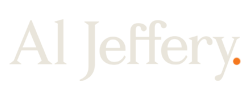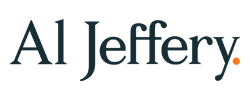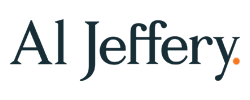3 Powerful Self-Reflection Rituals for the New Year! (a 360-degree reflection model)
“Life can only be understood backwards; but it must be lived forwards.”
Soren Kierkegaard
Flipping from one Gregorian year to another is a great opportunity to pause, take stock, reflect and re-connect.
The more I delve into practices of self-reflection and self-inquiry, the more I find the timely power in them. In this time of distraction, fragmentation and information paralysis, finding our own unique ways of making-meaning and coming back to ourselves is increasingly important.
More than simply keeping a diary of what happens and when, self-reflection is a practice of delving deeper into our experiences, feelings, behaviours and what may lie behind them.
It’s about starting to become intimately connected with ourselves and the world around us, as well as the relationship between ourselves and the world around us.
Taking a magnifying glass to the hilariously confusing spaghetti of our body-minds. Not to ‘catch ourselves out,’ or with any pretense that we must be ‘fixed.’ Simply to better understand our own resources and impulses.
A regular practice of self-reflection is known to increase personal resilience, reverence and gratitude for the life we’re part of, empathy for more than our own perspectives.
In this article (it’s a meaty one!), we’ll explore 3 reflection rituals that I use at the change of year. I also have a monthly reflection ritual, and a weekly checkin ritual that I find useful to catch myself amidst the sways of everyday life.
We’ll explore:
- Peer-Mirroring Survey
- Reflection Questions and Journaling
- Wheel of Life Checkin
So let’s get into it, shall we! 👍
Peer-Mirroring Survey
Why is peer-mirroring important?
Our sense of self emerges in the context of relationship, and those we spend most intimate time with will often see us in ways that we are unable to see ourselves.
That which we do not know about ourselves yet, and that which we may never know lays in the minds and hearts of those around us.
You might be familiar with Johari’s Window? If not, this is a model of relational self-awareness to explore our known knowns, unknown knowns, known unknowns and unknown unknowns.
A process of inviting a select number of people, whom know us intimately to share their reflections around specific topics can be useful to identifying blindspots and opportunities in our own self development.
What is peer-mirroring?
This is simply a survey form that you design and send around personally to a select number of friends who have earned your trust. In asking for honest, vulnerable and clear reflections, it is important that these people are people who have earned your trust.

How should I do this ritual?
Setup a Google Form or Typeform survey that can only be seen by people you send it to directly.
Include some prompts similar to the below, and adapt for yourself.
“From knowing me and spending time with me, what do you think/feel are my greatest talents and strengths? What gifts could I contribute to our world?”
“Do you have any stories or experiences of when, where or around who you have seen me at my best, and at my heights of excellence?”
“In your opinion and experience of me, what makes me most alive and in flow? What activities put me most into a state of awe, focus and enthusiasm?”
“In complete reflection and honesty, what is the ‘one thing’ you feel I should be pouring my energy into right now? Is there something you feel I do best and am most alive in doing that nothing else should interrupt?”
“Is there anything in your experience of me, that you feel is an opportunity for growth (personally or professionally)? Something that may hold me back from giving as much as I can, or opening to the beauty in this life?”
Select 5-10 people who know you intimately and you know will gift you honest, thoughtful and heart-full reflections.
Send a personal message to them with a link to fill out the survey.
Once everyone has filled in the surveys, sit with the reflections, notice any patterns, reflect on what has been affirmed and what feels like new insights.
Thank everyone and let them know something meaningful you took from the practice.
Reflection Questions & Journaling
If you were to just do one practice as a point of reflection as the change of year, season or any other transition in time, I would have it be journaling.
The magic of journaling is the structured monologue that takes place. In the same way that in an analytical meditation we explore our psyche, experiences, impulses and intuitions, journaling allows us to do the same and then read back over what we’ve written.
We become our own greatest guide and coach in this way. Building the capacities to probe into our own experience, listen to ourselves and make meaning for ourselves.
How should I do this ritual?
Create a clearing – set aside 1 hour, make some tea, light a candle, set the space.
Arrive in your body – do a short guided meditation, some dancing or whatever you need to move beyond the thinking-mind and into direct experience.
Explore each prompt – take your sweet time to sit with each prompt, write or draw whatever arises for you. Maybe even taking a short break to shake it out in-between each section.
Do it together – sharing the process of self-reflection with others can be a beautiful thing. Bring some friends together, all bring a plate of something to share, answer your questions, share some of your responses and celebrate the year and how you’ve grown.
Hindsight – reflecting on the year that has been.
“Gratitude makes sense of our past, brings peace for today, and creates a vision for tomorrow.”
Melody Beattie
- If you were to list 4 core themes that represent this year for you, what would they be? (ie. presence, exploration, connection)
- What are the top 10 things, people or events you are grateful for this year? (maybe you’d like to write them a little note?)
- What 3 achievements for the year are you most proud of?
- Which 5 people did you most enjoy spending time with?
- What activities made you lose track of time?
- Is there a goal or intention that didn’t transpire for you this year?
- Did you learn any new skills this year?
- Did you create anything cool this year?
- Any cool or funny compliments that you received and won’t forget?
Insight – harvesting the wisdom from your experiences.
“The only way to make sense out of change is to plunge into it, move with it, and join the dance.”
Alan Watts
- What would you say is the most important lesson you learnt this year?
- Why are you most proud about what it is you wrote above?
- Out of all the places you went or experienced, where did you feel most creative and alive?
- What are the common traits among those 5 people you mentioned above? What type of people are you most in “flow” around?
- Those activities that you loose track of time with, have you acknowledged these before? Do you have regular time to do these?
- That goal or intention that didn’t transpire for you? Why do you feel this might have been? What can you learn from this?
- Are there any activities you found yourself doing this year that felt icky, out of alignment or clearly zapped more energy than they gave?
- Is the way you operated your year in any regard in contradiction to what you believe your values to be?
Foresight – planting seeds for the year ahead.
“True discipline is really just self-remembering; no forcing or fighting is necessary.”
Charles Eisenstein
- Right now looking forward, what would you like your overarching theme to be for 2019? (ie. exploration, remembering, commitment)
- What stands out as a key opportunity for personal growth next year?
- Who do you want to spend more time with next year?
- What new skill do you want to learn or improve?
- What personal attribute or quality would you like to sharpen or live more?
- What is one story you will stop telling yourself next year? What new story will you replace this with?
- What is the one goal that excites you the most for next year?
Wheel of Life Checkin
**I would usually do this checkin as a part of the ‘Insights’ practice above.
However, it can be a great stand-alone practice to gain perspective and clarity of your current position.

What is a Wheel of Life Checkin?
A Wheel of Life Checkin is a great way to gain perspective on how balanced you are in the areas of your life that matter most to you. By visually mapping your perceived-fulfillment in this way, you can start to see where you are doing well and where you might need to place a little more energy and love.
It is a great visualisation of what ‘wholeness’ looks like to you, and where you are currently in your journey towards it.
How do I do a Wheel of Life Checkin?
Of course this is my current way of doing this checkin. You’ll get the essence of the practice and be able to adjust and make it suit your needs and style.
Choose the spokes to your wheel – These might be similar to my 10 spokes below, or you might come up with your own. The question of ‘what are the elements to an enriched and ‘whole’ life for me,’ might be useful here in helping you discover your spokes – and they’ll change over time 😉
i. Health & Fitness?
ii. Intellect?
iii. Emotions?
iv. Spirituality?
v. Friendly & Family Relationships?
vi. Intimate Relationships?
vii. Wealth & Career?
viii. Experiences & Fun?
ix. Creativity?
x. Contribution?
Draw your wheel and label your spokes

Mark where you currently feel you are from 0-10 on each spoke – 0 = not so great, 10 = feeling super alive in this domain.

Connect your dots – connect the dots on your spokes and see your wheel come to life.

Reflect on your wheel’s balance – where is a little flat and might need a little more love and energy?
Looking back, what can you learn about how you managed and nurtured these domains of your life? What can you take away from this practice?
There you go! A collection of 3 yearly self-reflection rituals that I use, and find give me a grounded, honest and wholesome perspective. They leave me feeling grateful, honoured, connected and clear.
I’d love to know, do you have a self-reflection ritual that you’d add to this or swap out for something? Which of these 3 rituals do you feel would be most useful or supportive for you?
Let me know in the comments or send me an email at al@aljeffery.com.
Feel free to share with those you know are also self-reflective folk 😉





